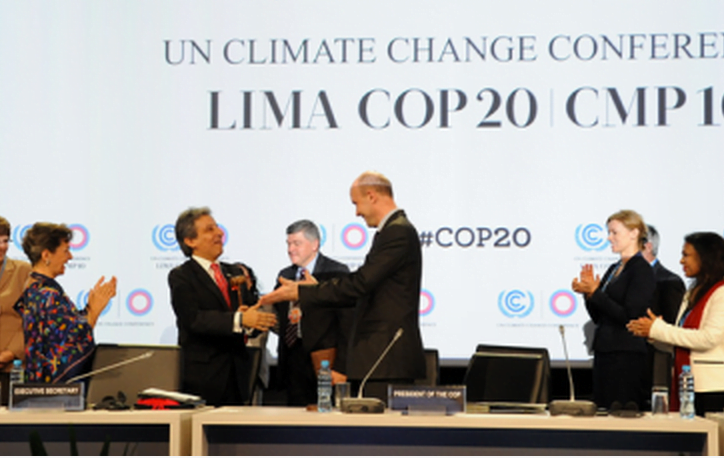(Lima, Peru) — There are a lot of moving parts, diplomatic sleights of hand, and nuanced negotiations underway at COP20 in Lima. But to really understand the Lima climate change negotiations you have to understand the concept of “differentiation.” This is basically the question of whether a particular country is designated as developed, developing, or least developed within the climate conference context. Where a country falls along that spectrum can inform what obligations that country has to the rest of the world in terms of mitigating emissions, compensating other countries to adapt to climate change, and in setting what is known as the “intended nationally determined contributions (INDCs)” – the official name of each country’s national climate action plans which are central to any final internationally binding climate agreement.
Differentiation seemed simple enough back in 1992 when the framers of the Kyoto Protocol needed a way to determine the polluters from the ones being polluted in order to set the course of repairing and compensating the latter. An Annex system was developed, separating richer, western nations like the United States, EU members, Canada, and Australia under Annex 1; and developing and poorer nations, including India and China, under a non-Annex 1 label.
When the climate negotiations began 20 years ago, there was no more convenient definition of how to designate who should pay and reduce emissions and who should receive those funds in order to adapt to the damage done by climate change. Over the years, the debate shifted to a more nuanced debate. This has brought the question of “differentiation” to the center of the debate in Lima.
As U.S. Special Envoy for Climate Change Todd Stern and EU Climate Action and Energy Commissioner Miguel Arias Canete both told the press the other day, the world has changed and so should the concept of differentiation. Not the only geopolitical and economic situation to change since 1992, but of note is that the economies of India and China far exceed that of some Annex 1 countries as do their greenhouse gas emissions, but they are still formally considered developing countries in the context of climate diplomacy.
This week in Lima it is clear that the G-77 group of developing countries and China want to stick to the 1992 Annex differentiation standard. Annex 1 countries must put forth ambitious mitigation and financial targets, but also pledge to do more on adaptation. Non Annex 1 countries will focus on adaptation, while India and China will compromise and make strides on mitigation.
Today and tomorrow in Lima countries are will go back and forth on a lot of issues, but differentiation will thread through all of them. Perhaps the most prominent issue to be discussed this week with a controversial sticking point on differentiation will be the debate on the structure and review mechanism for each country’s domestic climate action plans, or the INDCs.
Countries have been painstakingly going through the draft text that will decide all the details on INDCs line-by-line, with Annex 1 and non Annex 1 countries squaring off. Stern told the press yesterday that there were several proposals on the table regarding what kind of information each country would need to provide in their INDC in 2015. Among the options was at least one proposal that indicated Annex 1 and non Annex 1 countries would be required to provide different information in their INDCs. The idea behind it was that Annex 1 countries would be required to include more information about adaptation measures (as in, how they will compensate poorer countries for the effects of climate change and help them develop their economies in a low carbon way) rather that just focusing on reducing emissions. Stern said the U.S. is “certainly not going to accept” that kind of proposal.
Tomorrow is the last official day of negotiations, but given the major differences of opinion on differentiation the text and negotiations may drag into this weekend. It is not 1992 anymore and perhaps the Annex designations are outdated, but until a more suitable framework is agreed to – which is not likely going to happen in Lima – this is the system that will countries will have to work with for formulating their INDCs.
